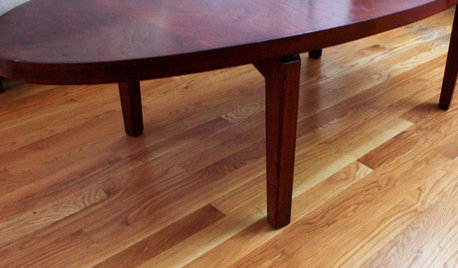another quick juglone question
Nevermore44 - 6a
12 years ago
Related Stories

KITCHEN DESIGN9 Questions to Ask When Planning a Kitchen Pantry
Avoid blunders and get the storage space and layout you need by asking these questions before you begin
Full Story
LIFEA Quick Downsizing Quiz for the Undecided
On the fence about downsizing? We help you decide whether that fencing should encircle a mansion or a mini trailer
Full Story
CONTAINER GARDENS3 Steps to Creating Quick, Easy and Colorful Succulent Containers
Take a bright container, add a colorful succulent or two and have a professional, summery design in minutes
Full Story
DECORATING GUIDESQuick Fix: Erase Water Rings from Furniture
A few household items can quickly rejuvenate tarnished wood tabletops
Full Story
HOUSEKEEPINGThe Quick and Easy Way to Clean a Microwave
All you need is water and a couple of other natural ingredients to get your appliance sparkling and smelling fresh again
Full Story
LIVING ROOMSRoom of the Day: Curiosities Bring Quick Intrigue to a Living Room
From blank box to captivating, exotic concoction, this room goes for the wow factor — and the whole house took just 4 days
Full Story
DECORATING GUIDESQuick Fix: Find Wall Studs Without an Expensive Stud Finder
See how to find hidden wall studs with this ridiculously easy trick
Full Story
HOUSEKEEPINGFurniture Clinic: Quick DIY Glides for Sofa, Chair or Table
Smooth things over between your furniture and floor with easy glides cut from leather scraps
Full Story
MONTHLY HOME CHECKLISTSYour Checklist for Quick Houseguest Prep
Follow these steps to get your home ready in a hurry for overnight visitors
Full Story
GARDENING FOR BUTTERFLIESA Quick-Start Guide to Bird-Watching for Fun and Learning
Set out some seed and grab your field guide. Bird-watching is an easy, entertaining and educational activity for the whole family
Full StoryMore Discussions






jean001a
lovestogarden
Related Professionals
Canton Landscape Architects & Landscape Designers · Derry Landscape Architects & Landscape Designers · Forest Hills Landscape Contractors · Little Ferry Landscape Contractors · Nashua Landscape Contractors · Rio Linda Landscape Contractors · Saint Paul Landscape Contractors · West Haverstraw Landscape Contractors · Shenandoah Landscape Contractors · Diamond Bar Decks, Patios & Outdoor Enclosures · Lake Arrowhead Decks, Patios & Outdoor Enclosures · Parlier Decks, Patios & Outdoor Enclosures · Richmond Decks, Patios & Outdoor Enclosures · Roseville Decks, Patios & Outdoor Enclosures · South Lyon Decks, Patios & Outdoor Enclosurestoxcrusadr
Nevermore44 - 6aOriginal Author
Kimmsr
jolj
Tiffany, purpleinopp Z8b Opp, AL
robertz6
Tiffany, purpleinopp Z8b Opp, AL
tsugajunkie z5 SE WI ♱
Tiffany, purpleinopp Z8b Opp, AL